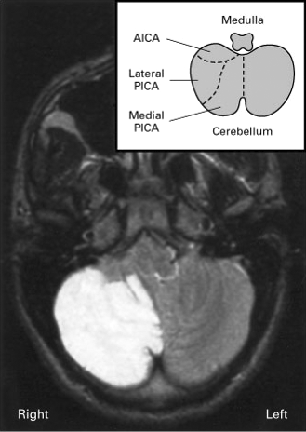

Mary’s Hospital, The Catholic University of Korea, Seoul, Republic of Koreaĭepartment of Neurosurgery, College of Medicine, Seoul St. Department of Neurosurgery, College of Medicine, Seoul St.Department of Neurosurgery, The Ajou University School of Medicine, Ajou University Hospital, Suwon, Republic of Korea.Department of Neurosurgery, Gangnam Severance Hospital, Yonsei University College of Medicine, Seoul, Republic of Korea.Department of Neurosurgery, Hankook Hospital, Cheongju, Republic of Korea.

Department of Neurosurgery, Konyang College of Medicine, Konyang University Hospital, Daejeon, Republic of Korea.Those in which PICA and AICA territories were involved together presented with similar clinical features as in the cases in which only the AICA territory was involved.Article Type: Jihye Song, Jung Eon Park, Joonho Chung, Yong Chul Lim, Yong Sam Shin The cases in which the territories of the three cerebellar arteries were affected presented in deep coma, together with tetraplegia in some patients. These extensive infarcts were often associated with tonsillar herniation and massive paramedian brainstem infarction. In 7 cases, the infarction also involved the PICA territory or the PICA and the superior cerebellar artery territories. Study of the arteries showed that arterial occlusion was mainly due to thrombosis superimposed on atheromatous stenosis. Horner's syndrome or skew deviation was rare. Contralateral pain and temperature sensory loss was present at times. Cerebellar signs and motor weakness occurred frequently. Clinically, involvement of several cranial nerves (facial palsy, multimodal trigeminal sensory impairment, deafness, sometimes with tinnitus, a vestibular syndrome, or lateral gaze palsy) was constant. No brainstem compression or tonsillar herniation were observed with infarcts affecting the AICA territory alone. In most infarcts, the inferolateral pontine territory was involved, the infarction sometimes extending up to the middle third of the lateral pons and down to the superior part of the lateral medulla. In these cases, the posterior inferior cerebellar artery (PICA) was hypoplastic. The largest infarcts extended to the anterior and inferior aspects of the cerebellum. Next most frequently involved was a thin band of tissue in the adjacent cerebellar white matter, comprising laterally the neighbouring cerebellar lobules. In a few cases, the infarction extended to the flocculus. In these pontocerebellar infarcts the middle cerebellar peduncle was the core of the affected territory. In the present series cerebellar infarcts involved only the AICA territory in 13 cases. Clinicopathological reports on infarction in the territory of the anterior inferior cerebellar artery (AICA) are rare.


 0 kommentar(er)
0 kommentar(er)
